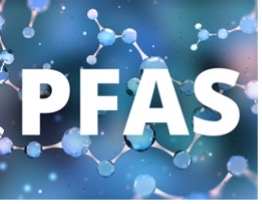USEPA Releases PFAS Strategic Roadmap
The U.S. Environmental Protection Agency (USEPA) has released its PFAS Strategic Roadmap, which outlines how the Agency will take a wholistic approach to address PFAS pollution. Upon the roadmap’s release, USEPA Administrator Michael Regan stated that the roadmap will deliver protections to the public by advancing actions that address the full lifecycle of these forever chemicals. A copy of the roadmap can be accessed here. Following the release of the roadmap, USEPA will engage with stakeholders to identify collaborative solutions and will hold two national webinars on October 26 and November 2 that are open to the public. To attend the webinars, RSVP using the hyperlinked dates above.
Of importance to CASA are the roadmap’s actions to address and manage PFAS contamination in wastewater, under CERCLA, and establishing national PFAS testing and monitoring methods. The below is a selected summary of the roadmap, highlighting key actions that are of importance to CASA priorities.
Key Office of Water actions include:
- Finalize risk assessment for PFOA and PFOS in biosolids that will serve as the basis for determining whether regulation of PFOA and PFOS in biosolids is appropriate (expected winter 2024)
- Leverage National Pollutant Discharge Elimination System (NPDES) permitting to reduce PFAS discharges to waterways to reduce discharges of PFAS at the source and obtain more comprehensive information through monitoring on the sources of PFAS and quantity of PFAS discharged by these sources (expected winter 2022)
- Restrict PFAS discharges from industrial sources through a multi-faceted Effluent Limitations Guidelines program to proactively establish national technology-based regulatory limits, including progress on the nine industrial categories in the proposed PFAS Action Act of 2021 (expected 2022 and ongoing)
- Publish final recommended ambient water quality criteria for PFAS for aquatic life and human health to help Tribes and states develop standards, write permits, and assess cumulative impacts (expected winter 2022 and fall 2024)
Key Office of Land and Emergency Management actions include:
- Propose to designate certain PFAS as CERCLA hazardous substances to require reporting of PFOA and PFAS releases, enhance the availability of data, and ensure agencies can recover cleanup costs (proposed rule expected spring 2022, final rule expected summer 2023)
- Issue advance notice of proposed rulemaking on various PFAS under CERCLA to seek public input on whether to similarly seek CERCLA designation of other PFAS (expected spring 2022)
- Issue updated guidance on destroying and disposing PFAS to reflect public comments on interim guidance and to reflect newly published research results (expected fall 2023)
Key Office of Research and Development actions include:
- Develop and validate methods to detect and measure PFAS in the environment, including additional targeted methods for detecting and measuring specific PFAS, non-targeted methods for identifying unknown PFAS in the environment, and exploring “total PFAS” methods (ongoing)
- Advance the science to assess human health and environmental risks from PFAS by developing human health toxicity assessments under EPA’s Integrated Risk Information System program; by compiling and summarizing available and relevant scientific information; by identifying PFAS sources, transport, and exposure pathways; and by characterizing how exposure to PFAS may contribute to cumulative impacts on communities (ongoing)
- Evaluate and develop technologies for reducing PFAS in the environment to inform decisions on drinking water and wastewater treatment, contaminated site cleanup and remediation, air emission controls, and end-of-life materials management (ongoing)
Key actions that cut across multiple USEPA programs include:
- Use enforcement tools to better identify and address PFAS releases at facilities, as appropriate, to require actions by responsible parties, to limit future releases, and to address existing contamination (ongoing)
- Establish a PFAS Voluntary Stewardship Program to challenge industry to go above and beyond regulatory or compliance requirements to reduce overall releases of PFAS into the environment (expected spring 2022)
- Issue an annual public report on progress towards PFAS commitments included in this roadmap, as well as future actions the Agency may take (winter 2022 and ongoing)
USEPA and USACE Send WOTUS Proposed Rule to White House
 The U.S. Environmental Protection Agency (USEPA) and U.S. Army Corps of Engineers (USACE) sent a Waters of the U.S. (WOTUS) proposed rule to the White House’s Office of Management and Budget (OMB) that revises the definition of a “water of the U.S.” As of this writing, a copy of the proposed rule has yet to be released, so it is still unknown how the Biden Administration revises the definition. However, USEPA has stated that it wants to craft a WOTUS rule that endures future Administrations. USEPA and USACE has also requested input on potential location selections for the ten WOTUS roundtable sites. The roundtables are intended to represent the perspectives of the varying regions across the country and to listen to stakeholders’ experiences under past WOTUS regulatory decisions. In a press release, USEPA explained that the purpose of the roundtables is to understand the differing regional perspectives of how the regions are affected by the previous WOTUS definitions, learn about the experiences, challenges and opportunities of stakeholders under various definitions, and facilitate engagement across diverse perspectives to inform the development of a durable and workable WOTUS definition.
The U.S. Environmental Protection Agency (USEPA) and U.S. Army Corps of Engineers (USACE) sent a Waters of the U.S. (WOTUS) proposed rule to the White House’s Office of Management and Budget (OMB) that revises the definition of a “water of the U.S.” As of this writing, a copy of the proposed rule has yet to be released, so it is still unknown how the Biden Administration revises the definition. However, USEPA has stated that it wants to craft a WOTUS rule that endures future Administrations. USEPA and USACE has also requested input on potential location selections for the ten WOTUS roundtable sites. The roundtables are intended to represent the perspectives of the varying regions across the country and to listen to stakeholders’ experiences under past WOTUS regulatory decisions. In a press release, USEPA explained that the purpose of the roundtables is to understand the differing regional perspectives of how the regions are affected by the previous WOTUS definitions, learn about the experiences, challenges and opportunities of stakeholders under various definitions, and facilitate engagement across diverse perspectives to inform the development of a durable and workable WOTUS definition.




 @CASA_CleanWater
@CASA_CleanWater